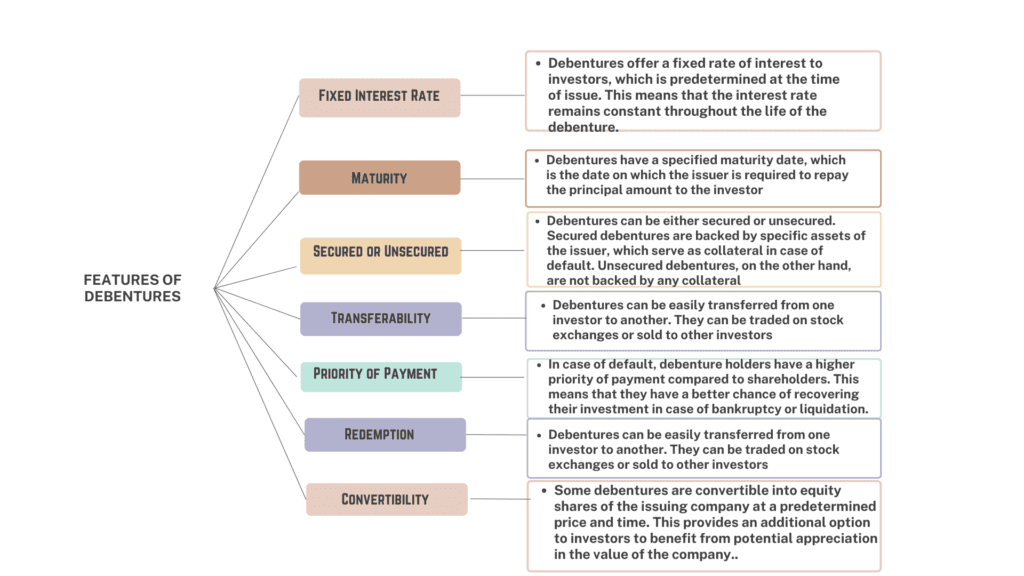
If you want to unlock your financial Success, Mutual Funds can be one of the best options for you. Explore Mutual Funds for Consistent Returns. In this blog we will explore Mutual funds, their advantages, features and fundamentals, as well as how to unlock potential gains to achieve financial goals with confidence. we will guide you through the basic factors to consider in the Investment portfolio of Mutual Funds for high returns.
What is mutual fund?
A mutual fund is an investment funds that pools money from many investors to make invest in a diversified portfolio of stocks, bonds, or other securities. It is managed by professional fund managers or trust who make investment decisions on behalf of the investors sharing a common investment objective.
Benefits of investing in mutual funds
Investing in mutual funds offers several benefits for investors. Here are some key advantages of investing in mutual funds:
- Professional Management: Mutual funds are managed by experienced investment professionals who have the expertise and resources to make informed investment decisions. They conduct research, analyze market trends, and actively manage the fund’s portfolio, aiming to achieve the fund’s stated investment objective.
- Diversification: Mutual funds provide diversification by investing in a wide range of securities across different asset classes, sectors, and geographic regions. This diversification helps to spread investment risk. By holding a diversified portfolio, the impact of poor performance in any single security is reduced, potentially enhancing the overall risk-adjusted returns.
- Accessibility: Mutual funds are accessible to a wide range of investors. They have relatively low investment minimums, allowing individuals with smaller amounts of capital to participate in diversified investment portfolios.
- Liquidity: Mutual fund shares can typically be bought or sold on any business day at the fund’s net asset value (NAV). This provides investors with liquidity and flexibility, allowing them to convert their investments into cash relatively quickly.
- Affordability: The cost of investing in mutual funds can be relatively affordable compared to building a diversified portfolio of individual securities. By pooling money from numerous investors, mutual funds can benefit from economies of scale, potentially reducing transaction costs and making investing more cost-effective.
- Variety of Investment Options: Mutual funds offer a wide range of investment options to suit various investment goals, risk tolerances, and time horizons. Investors can choose from equity funds, bond funds, hybrid funds, sector-specific funds, index funds, and more.
- Transparency: Mutual funds provide regular reports to investors, including information about the fund’s holdings, performance, fees, and expenses. This transparency allows investors to monitor their investments and make informed decisions.
- Convenience: Investing in mutual funds is convenient, as the fund manager handles all the administrative tasks, such as buying and selling securities, dividend reinvestment, and record-keeping. Investors can focus on their investment strategy without the need for day-to-day involvement in managing individual securities.
Importance of understanding mutual fund basics
- Informed Decision-Making: Investors can make informed decisions about their investments. They can evaluate different mutual funds based on their investment objectives, risk profiles, historical performance, fees, and other factors. This knowledge helps investors select funds that align with their financial goals and risk tolerance.
- Risk Management: Understand the risk associated with different funds. Investors can assess the fund’s investment strategy, asset allocation, and historical performance to evaluate its risk level. Understanding the risks allows investors to make informed decisions and manage their overall investment risk more effectively.
- Portfolio Diversification: Investors can grasp the concept of diversification and its importance in spreading investment risk. They can assess the diversification offered by different mutual funds and use them to build a well-diversified investment portfolio across various asset classes and sectors.
- Performance Evaluation: Evaluate the performance of funds they are invested in or considering for investment. Investors can analyze various performance metrics such as historical returns, risk-adjusted returns, and benchmark comparisons to assess a fund’s performance relative to its peers and market indices.
- Cost Considerations: Investors can assess the costs associated with investing in mutual funds. Investors can review a fund’s expense ratio, sales charges (if applicable), and other fees to evaluate the impact on their investment returns. Comparing costs across different funds allows investors to make cost-effective investment choices.
- Long-Term Planning: Mutual funds are often used for long-term investment goals such as retirement planning, education funding, or wealth accumulation. With better understanding investors can align their investment strategies with their long-term financial goals. They can assess factors like fund suitability, investment horizons, and potential growth or income generation to make informed decisions that support their long-term plans.
- Monitoring and Review: Effectively monitor and review fund investments. Investors can track the fund’s performance, assess any changes in investment strategy or fund management, and make adjustments to their investment portfolio when needed.
Types of Mutual Funds
There are several types of mutual funds available to investors, each with its own investment objective, risk profile, and strategy. Here are some common types of mutual funds:
- Equity Funds: Also known as stock funds, equity funds primarily invest in stocks or shares of companies. They can focus on specific market sectors (e.g., technology, healthcare) or follow a broader market index. Equity funds carry higher risk but also offer potential for higher returns over the long term.
- Bond Funds: Bond funds invest in fixed-income securities such as government bonds, corporate bonds, or municipal bonds. These funds generate income through interest payments and are generally considered lower risk compared to equity funds. Bond funds can vary in terms of credit quality, maturity, and duration.
- Money Market Funds: Money market funds invest in short-term, low-risk securities such as Treasury bills, certificates of deposit, or commercial paper. They aim to provide stability of principal and liquidity. Money market funds are often used as a cash management tool or a temporary place to hold funds before allocating them to other investments.
- Balanced or Asset Allocation Funds: Balanced funds, also known as asset allocation funds, invest in a mix of stocks, bonds, and sometimes cash equivalents. The allocation between different asset classes is determined by the fund manager based on the fund’s investment objective. These funds aim to provide both income and capital appreciation while managing risk.
- Index Funds: Index funds aim to replicate the performance of a specific market index, such as the S&P 500 or the FTSE 100. They passively track the index by holding a portfolio of securities that closely mirrors the index composition. Index funds typically have lower expense ratios compared to actively managed funds.
- Sector Funds: Sector funds focus on specific sectors of the economy, such as technology, healthcare, energy, or real estate. These funds invest in companies within a particular sector, providing targeted exposure to industries that investors may be interested in. Sector funds carry higher risk due to their concentrated investments.
- International or Global Funds: International or global funds invest in securities of companies located outside the investor’s home country. International funds focus on a specific region (e.g., Europe, Asia), while global funds invest worldwide. These funds provide exposure to international markets and can offer diversification benefits.
- Specialty Funds: Specialty funds invest in specific themes or areas, such as environmental sustainability (ESG funds), socially responsible investing (SRI funds), emerging markets, or specific industries like healthcare or technology. These funds cater to investors with specific investment preferences or interests.
- Hybrid Funds: Hybrid funds combine the features of both equity and bond funds. They typically invest in a mix of stocks and bonds, adjusting the allocation based on market conditions and the fund manager’s strategy. Hybrid funds aim to offer investors the benefits of diversification across asset classes while pursuing capital appreciation and income generation.
Key Factors to Consider When Selecting Mutual Funds
| Key Factors to Consider | Description |
| Investment Objective | Determine if the fund’s objective aligns with your investment goals (e.g., growth, income, capital preservation). |
| Risk Profile | Assess the fund’s risk level and ensure it matches your risk tolerance. Consider factors such as volatility and historical performance. |
| Performance | Evaluate the fund’s historical performance over different time periods and compare it to relevant benchmarks and peer funds. |
| Fund Management | Assess the expertise and track record of the fund manager or management team responsible for making investment decisions. |
| Fund Expenses | Consider the fund’s expense ratio, which includes management fees and other operating costs. Lower expense ratios can lead to higher net returns. |
| Investment Strategy | Understand the fund’s investment approach, such as active or passive management, and whether it aligns with your investment philosophy. |
| Portfolio Composition | Review the fund’s holdings and diversification across asset classes, sectors, and geographic regions. |
| Fund Size | Consider the fund’s size, as larger funds may face challenges in deploying capital effectively or maintaining flexibility. |
| Fund Structure | Decide between open-end funds or closed-end funds, considering factors like liquidity, trading flexibility, and pricing. |
| Fund Company | Evaluate the reputation, stability, and history of the fund company offering the mutual fund. Consider factors like client service and corporate governance. |
| Distribution Channels | Determine if the fund is available through your preferred distribution channels, such as online platforms, brokers, or financial advisors. |
Conclusion
In conclusion, this comprehensive exploration of mutual funds has shed light on their definition, advantages, types, key features, and basics. By delving into the world of mutual funds, investors gain access to a powerful investment vehicle that offers diversification, professional management, and the potential for consistent returns. Whether you’re seeking long-term growth, income generation, or capital preservation, mutual funds provide options tailored to various investment goals. Armed with this knowledge, you are equipped to make informed decisions, construct a well-rounded portfolio, and embark on a successful investment journey. Embrace the potential of mutual funds and pave the way towards achieving your financial aspirations with confidence.
Following are few useful resources to research before investing:
For US:
For India:
Do you want to also know about crypto currency?
You can refer to our post on this page.
FAQ
What is a mutual fund?
A mutual fund is a type of investment that pools money from many investors and invests it in a variety of assets, such as stocks, bonds, and money market instruments. Mutual funds are professionally managed, which means that a team of experts is responsible for making investment decisions on behalf of the fund’s shareholders.
What are the benefits of investing in mutual funds?
There are many benefits to investing in mutual funds, including:
- Professional management: Mutual funds are professionally managed, which means that a team of experts is responsible for making investment decisions on behalf of the fund’s shareholders. This can be a great benefit for investors who do not have the time or expertise to manage their own investments.
- Diversification: Mutual funds offer diversification, which means that your money is invested in a variety of assets. This helps to reduce your risk, as you are not putting all of your eggs in one basket.
- Liquidity: Mutual funds are liquid, which means that you can easily sell your shares if you need to access your money.
- Low costs: Mutual funds can be a relatively low-cost way to invest. This is because the management fees charged by mutual funds are typically lower than the fees charged by other types of investments, such as individual stocks or bonds.
What are the risks of investing in mutual funds?
There are some risks associated with investing in mutual funds, including:
- Market risk: The value of your mutual fund investments can go up or down, depending on the performance of the underlying assets. This means that you could lose money if the market takes a downturn.
- Management risk: The performance of your mutual fund investments can be affected by the decisions made by the fund’s manager. If the manager makes poor investment decisions, the value of your investments could decline.
- Expense risk: Mutual funds charge fees, which can eat into your returns. It is important to choose mutual funds with low expense ratios.
How do I choose a mutual fund?
When choosing a mutual fund, there are a few things you should keep in mind:
- Your investment goals: What are you saving for? Retirement? A down payment on a house? Once you know your goals, you can choose mutual funds that are appropriate for your time horizon and risk tolerance.
- Your risk tolerance: How much risk are you comfortable with? Mutual funds can be classified as conservative, moderate, or aggressive, based on their risk level. Choose mutual funds that match your risk tolerance.
- Your investment time horizon: How long do you plan to invest? Mutual funds are a long-term investment, so it is important to choose funds that you can afford to leave alone for several years.
- The fund’s fees: Mutual funds charge fees, which can eat into your returns. It is important to choose mutual funds with low expense ratios.
Where can I buy mutual funds?
You can buy mutual funds through a broker, a bank, or directly from the fund company. When you buy mutual funds, you will need to open an account with a broker or a fund company. You will also need to make a minimum investment, which is typically $100 or $250.
What is SIP?
SIP stands for systematic investment plan. It is a method of investing in mutual funds on a regular basis, such as monthly or quarterly. SIPs are a great way to dollar-cost average your investments, which means that you buy more shares when prices are low and fewer shares when prices are high. This can help you to reduce your risk and improve your chances of achieving your investment goals.
What is an index fund?
An index fund is a type of mutual fund that tracks a specific market index, such as the S&P 500. Index funds are a good option for investors who want to invest in the stock market but do not want to pick individual stocks. Index funds typically have low fees and low risk, and they have the potential to generate high returns over the long term.











